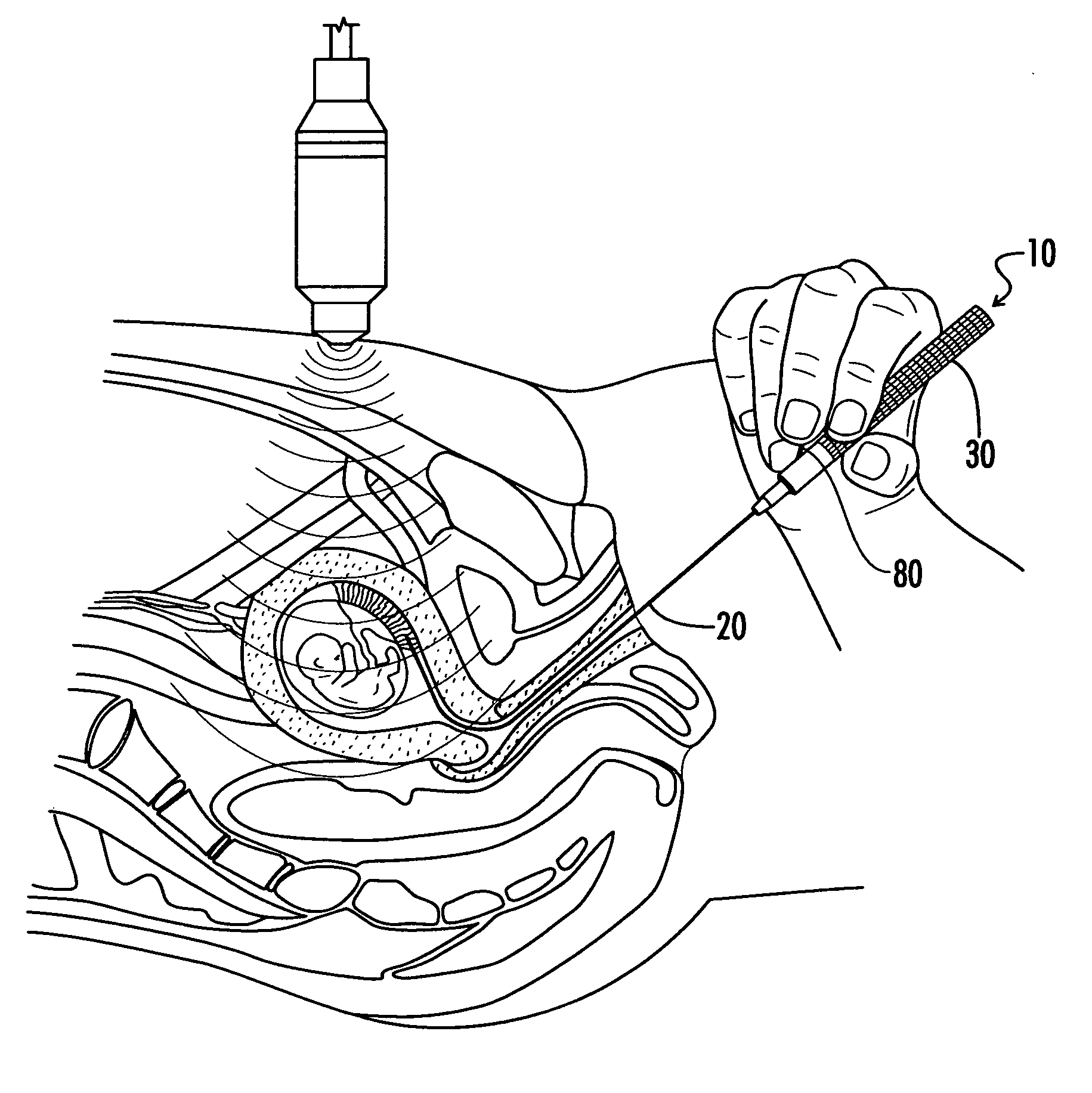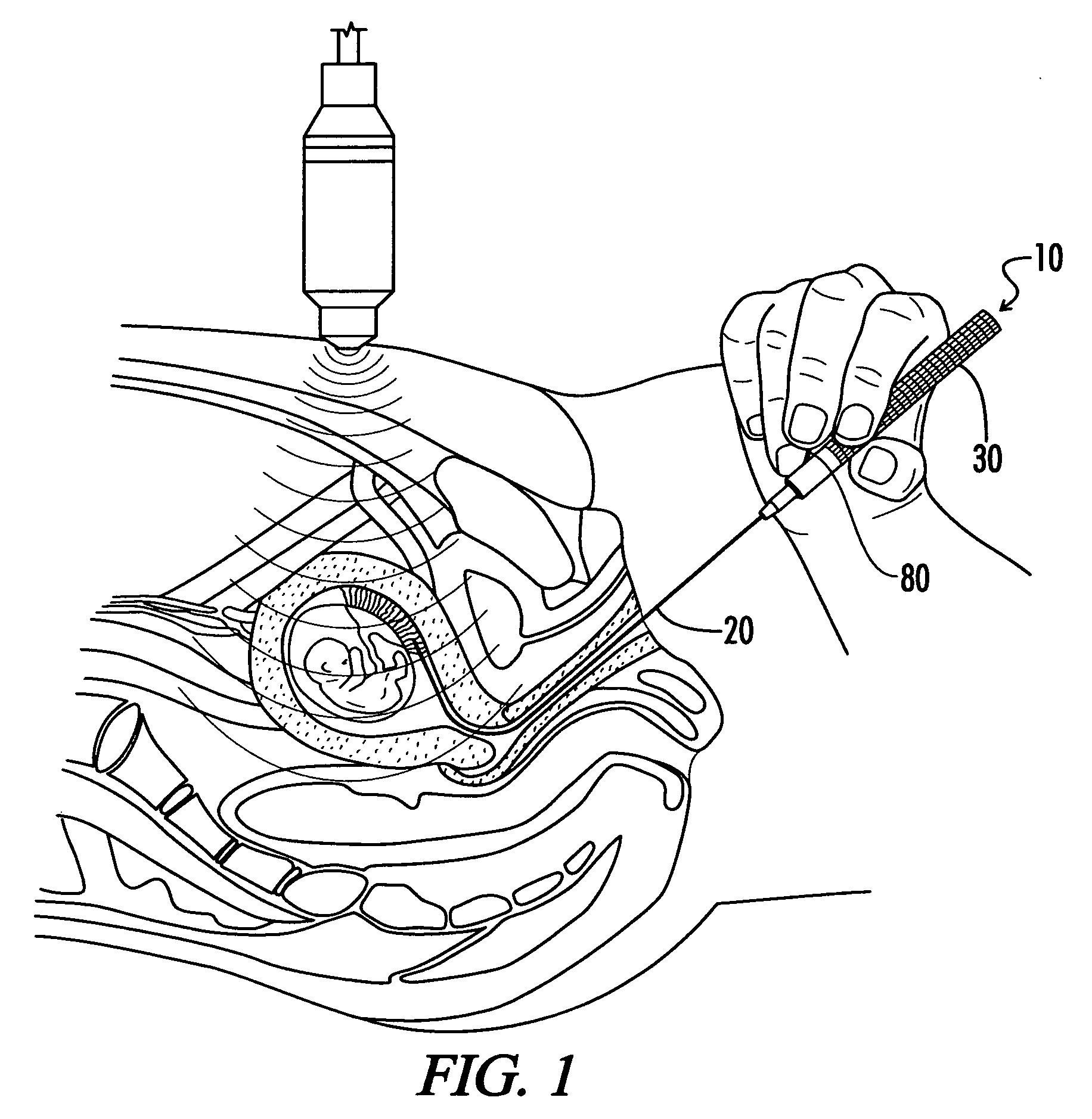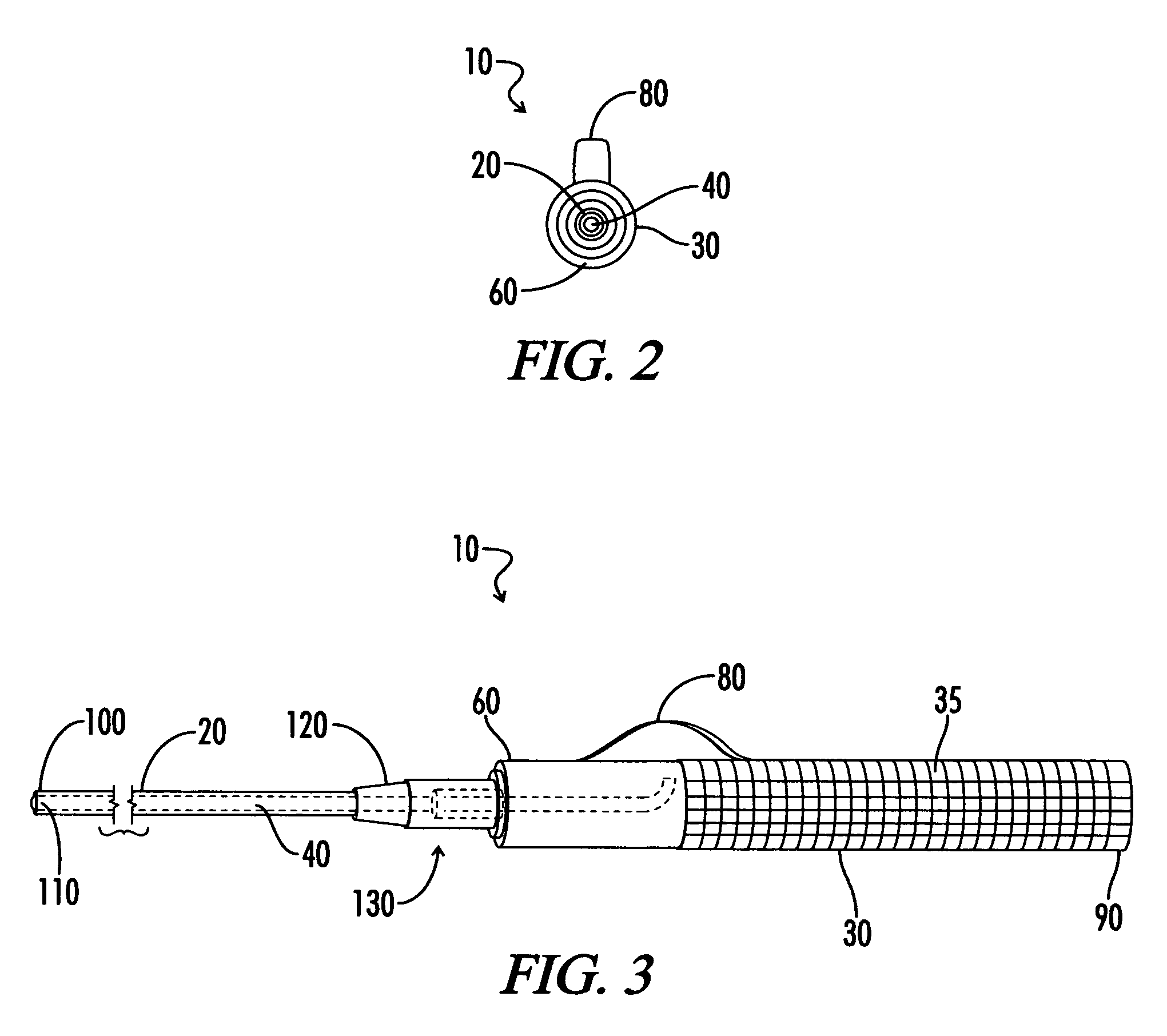Chorionic villus sampling catheter
a catheter and chorionic villus technology, applied in the field of catheters, can solve the problems of deflection of the cannula tip from the desired location, rupture of the patient's membrane, and deflection of the cannula tip, and achieve the effect of convenient use and convenient use of ultrasound
- Summary
- Abstract
- Description
- Claims
- Application Information
AI Technical Summary
Benefits of technology
Problems solved by technology
Method used
Image
Examples
Embodiment Construction
[0014]The present invention is directed to a catheter for use in sampling an area of interest, such as the chorionic villus sampling procedure or other uterine biopsy medical procedures, comprising a cannula readily adjustable by the operator to conform to the patient's anatomy and that remains in place when the obturator is removed to collect the sample, and an obturator with a generally cylindrical handle and steering guide to allow the operator ease of manipulation and placement of the catheter at the area of interest, for example, the chorion frondosum.
[0015]By way of explanation and example, the present invention will be described in detail below. It is to be understood, however, that the present invention is not limited to the specific structure described herein as will be evident to one of ordinary skill in the relevant art.
[0016]FIG. 1 is a diagrammatic view of an embodiment of the catheter of the present invention being inserted with the aid of a visualization or imaging de...
PUM
 Login to View More
Login to View More Abstract
Description
Claims
Application Information
 Login to View More
Login to View More - R&D
- Intellectual Property
- Life Sciences
- Materials
- Tech Scout
- Unparalleled Data Quality
- Higher Quality Content
- 60% Fewer Hallucinations
Browse by: Latest US Patents, China's latest patents, Technical Efficacy Thesaurus, Application Domain, Technology Topic, Popular Technical Reports.
© 2025 PatSnap. All rights reserved.Legal|Privacy policy|Modern Slavery Act Transparency Statement|Sitemap|About US| Contact US: help@patsnap.com



